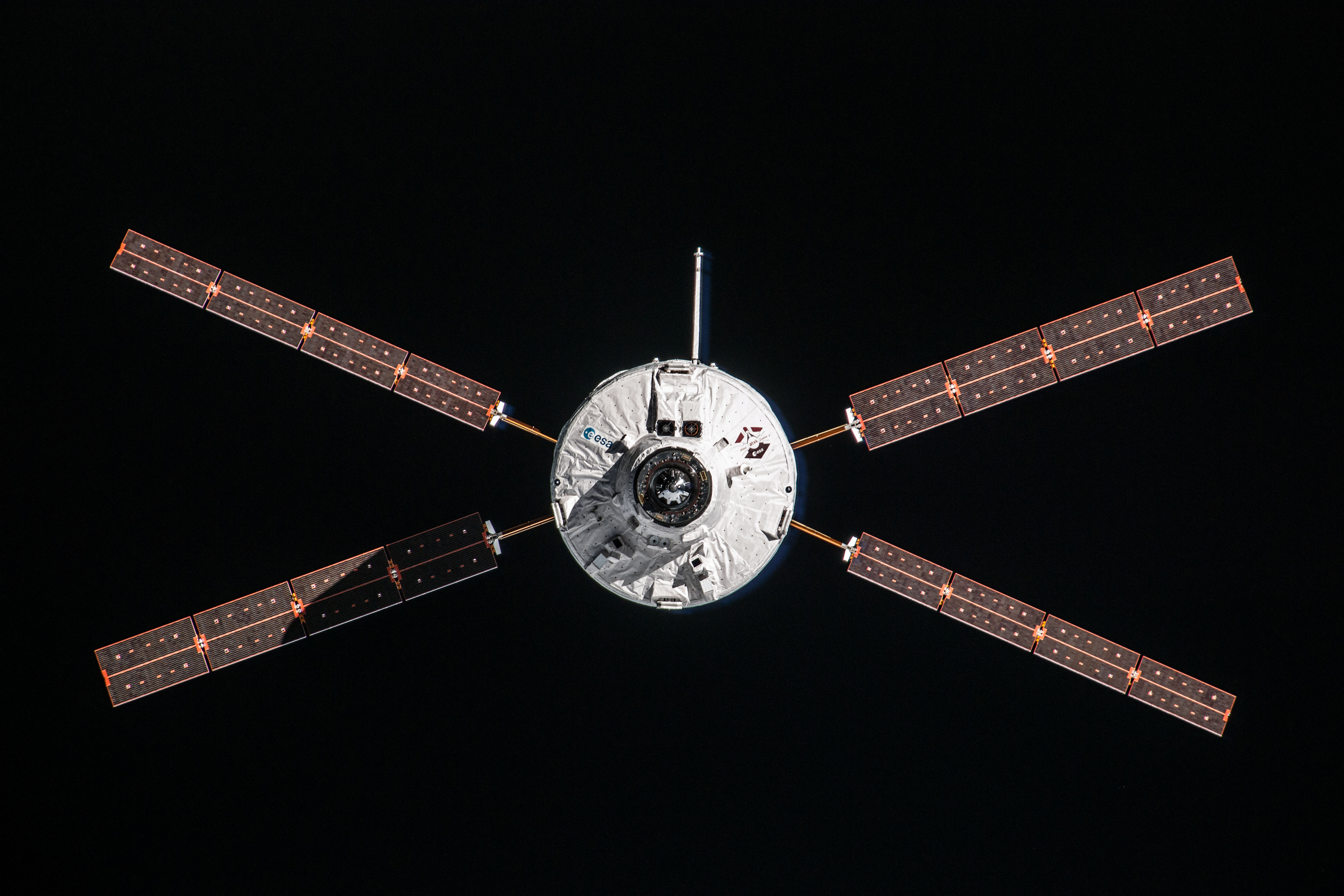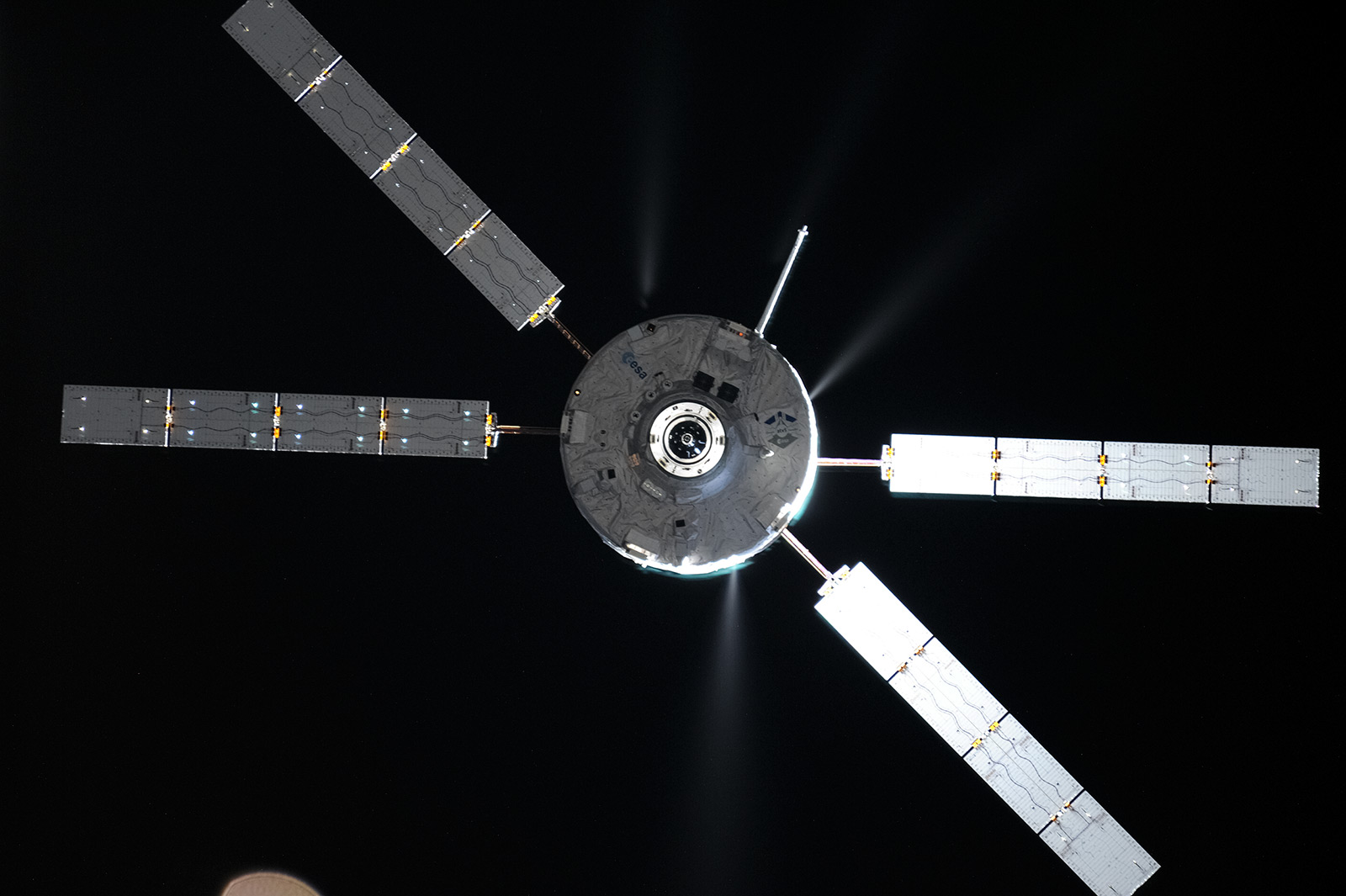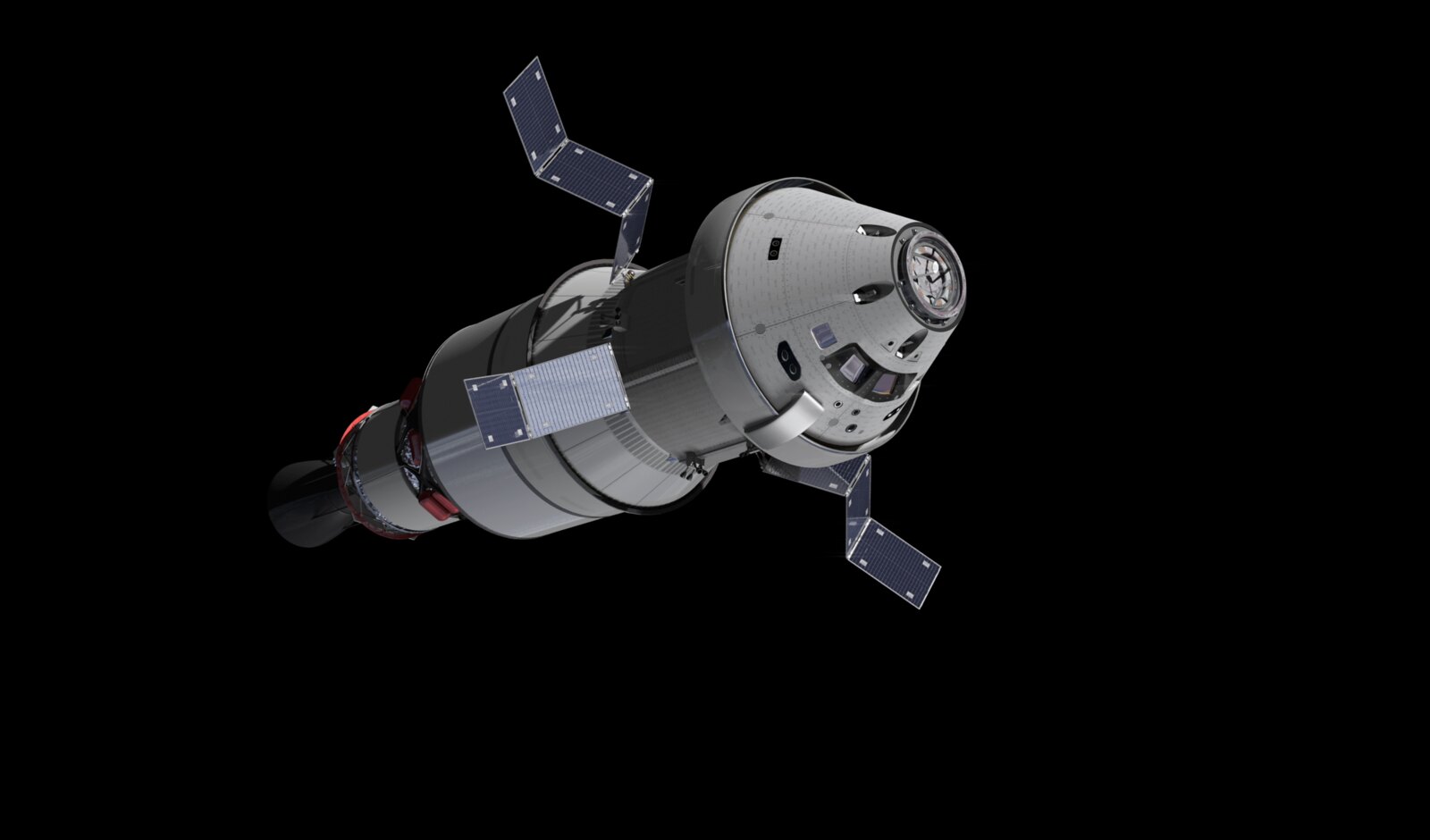Using its Orbit Correction System thrusters, ATV-3 performed a one-burn reboost of the ISS on 26 May at 02:10 CEST with a burn duration of 6 min, 17 sec. The burn achieved a ‘delta-V’ (change in orbital velocity) of 0.84 m/s (planned: 0.9 m/s), and increased the average Station altitude by 1.55 km (planned: 1.66 km).
Back in April, NASA astronaut Don Pettit, Expedition 30 flight engineer, captured this video of engines of the Automated Transfer Vehicle being fired to reboost the International Space Station. Credit: NASA
After the burn, the ISS was orbiting at 399.0 km average altitude, with 407.5 km apogee height and 390.6 km perigee height. The reboost was a slight underburn, providing about 7% less than expected delta-V and altitude gain.
This reboost — together with the next one in June — will set up orbit phasing for Soyuz 29S departure and landing, set for 1 July (the flight that will bring astronaut André Kuipers back home — Ed.).

 Automated Transfer Vehicle page
Automated Transfer Vehicle page ATV blog archive
ATV blog archive
Discussion: no comments